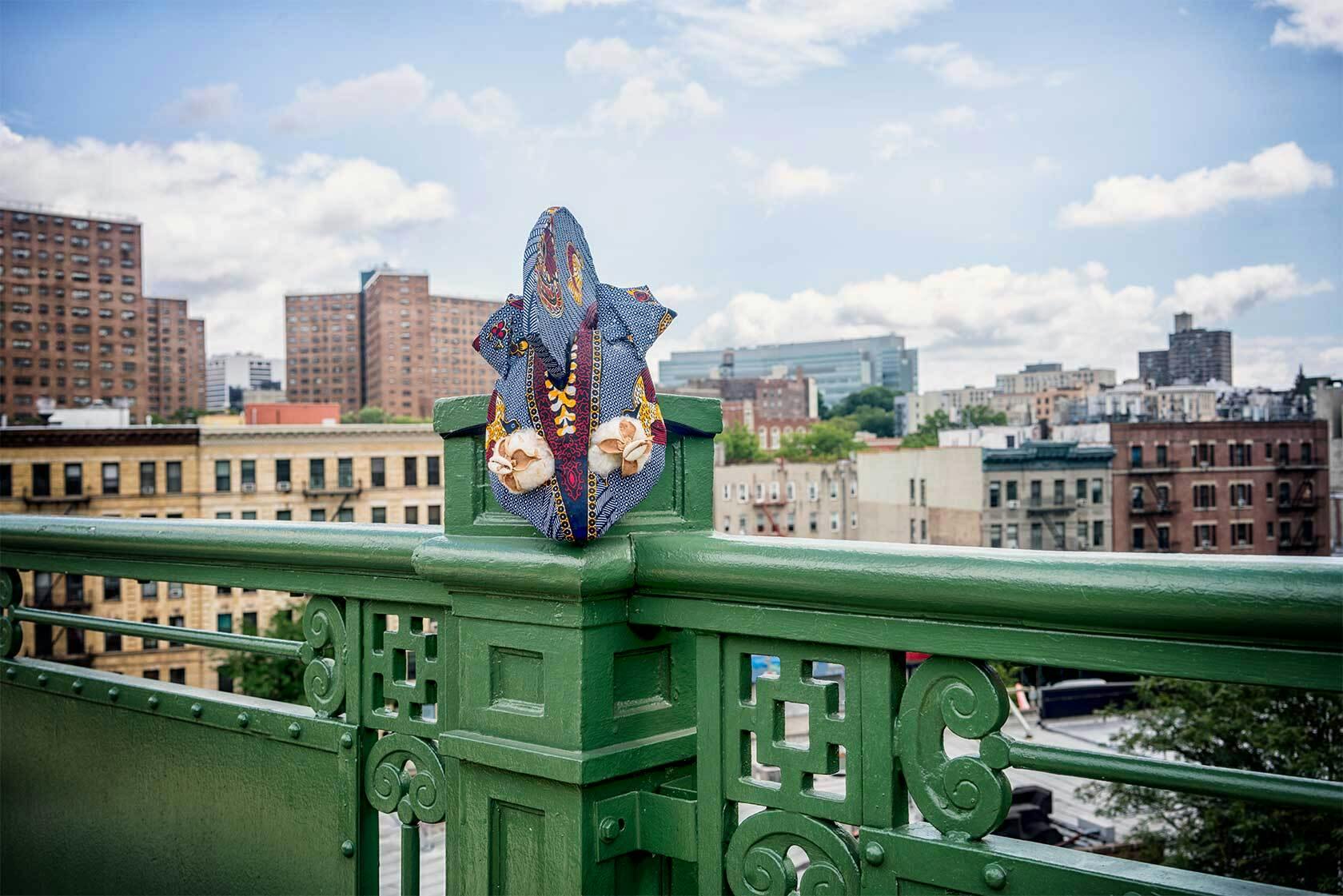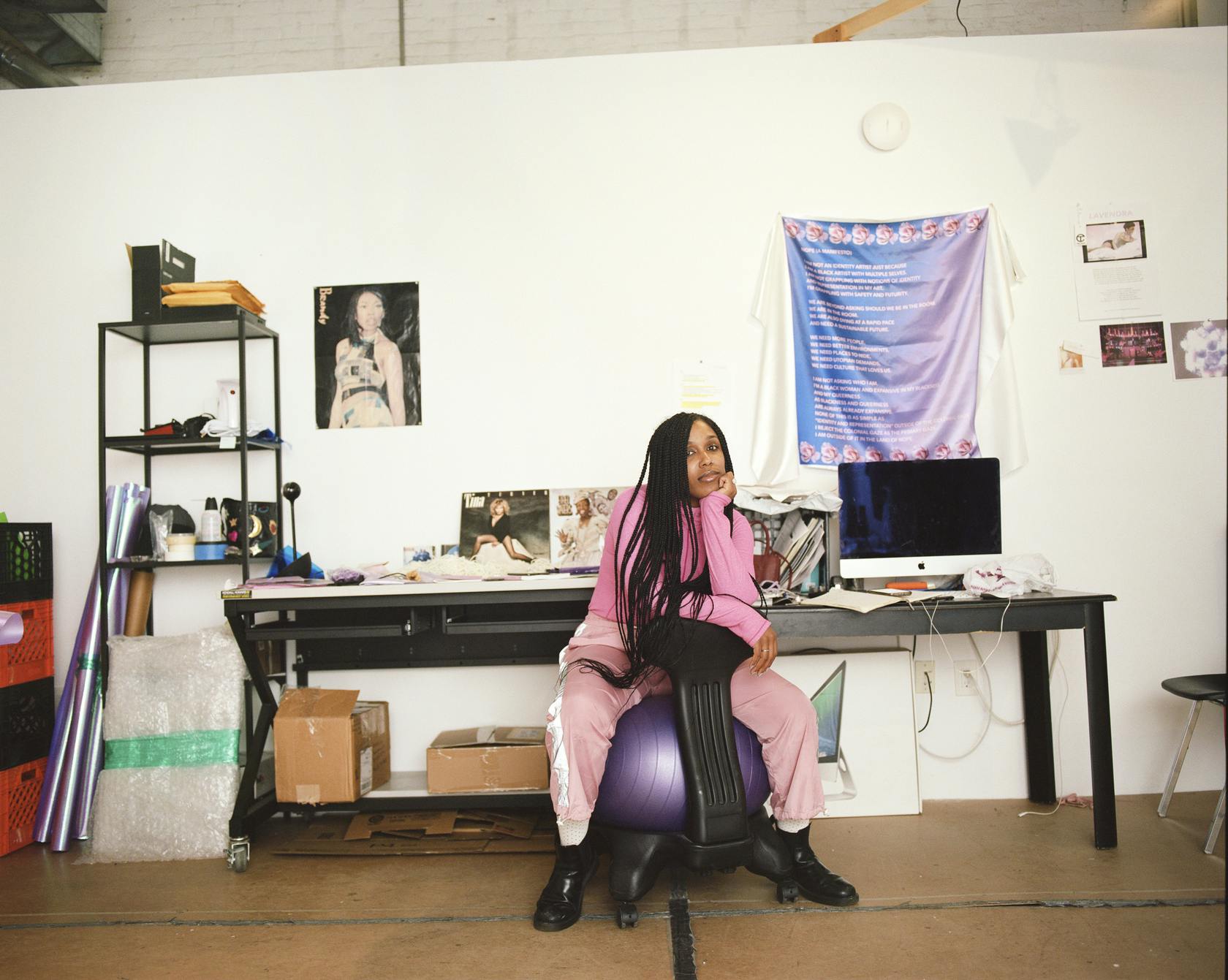Harlem Postcards
September 23, 2018–February 3, 2019

On view at Studio Museum 127, Harlem Postcards is an ongoing project that invites contemporary artists of diverse backgrounds to reflect on Harlem as a site of cultural activity, political vitality, visual stimuli, artistic contemplation, and creative production. Representing intimate and dynamic perspectives of Harlem, the images reflect the idiosyncratic visions of contemporary artists from a wide range of backgrounds and locations. Each photograph has been reproduced as a limited edition postcard available free to visitors.

"The rain had cleared, the roads were open, and the day was filled with unforgettable memories. What better way to celebrate life than to dance unapologetically on the streets? With Harlem as a backdrop, this photograph is an extension of my interest in visualizing what self-love and care can look like, and the many forms it can take. I aim to capture authentic emotions that are too unique to be replicated, but include a level of confidence and serenity that is relatable to all."
"Typically when a barbershop or salon has the gate down, so that only slivers of people are visible from the outside, it means they are closed to the public but available to those who know. To make a photograph is often to make something visible. Yet my goal as a photographer, and with the image produced for this series, is to render private moments and discourse with significant reserve."

"“I’m going up to One-Twenty-Fifth,” that’s where I first experienced the familiar in an unfamiliar setting. It was back, back then, I was way, way younger, and Mart One-Twenty-Five was alive and functioning, and the Mende in me felt embraced miles and a whole Atlantic Ocean away.
In hair tightly coiled and locked to fros, braids, and high-top fades, I saw myself. Hand-dyed dashikis reminded me of the Garra cloth made by my grandma’s hands in Pujehun, Sierra Leone.
And today, I, we, experience the unfamiliar in the familiar of Harlem. A spirit that remembers when we all were home moves through brownstones, projects, walk-ups, train stations, concrete spaces, and places—a place that I once knew and know. What will Harlem become? What will it be, in this diaspora of Africa affectionately known as Mecca?"

"Walking past the historic Apollo Theater, toward Frederick Douglass Boulevard, I found a clear box in the doorway of a music shop containing old DVDs, barely visible behind scratched plexiglass—a relic. Through the fogged pane, I saw Patti LaBelle holding a microphone, mid-performance, and “Patti LaBelle - Live in New York” on a DVD case. Like the music videos I work with, I wanted to look past the faded cover and the scratched box to see Patti LaBelle in all her Black diva glory, and to find out more about the recording. I found out the DVD was released in 2000 and documents a concert she did live at the Apollo in 1991.
I chose the Apollo, and the area around it, as the central site to photograph because of the theater’s relationship to Black American divadom and Black American women R&B singers (including Whitney Houston, Mary J. Blige, Toni Braxton, Kelly Price, and several others). I’ve been researching, archiving, and making art regarding Black American divas since around 2015. Specifically I have an archive of R&B music videos (both in video and as stills) from the 1990s that I use to make collages and video art, which I display in a multimedia installation called “Lavendra.” I think about the Black diva as a powerful Black woman figure; often she is a woman who takes care of her community through her job while dealing with misogynoir on a celebrity scale. The Black diva is also a figure Black women dream through; she is a source of beauty and a source of healing through song. I think it is important that we remember her as a figure/archetype, and I consider it a part of my practice to ensure the future of the Black diva. I have a performance persona, MHYSA, who acts as a vessel for the Black diva. She performs in videos for “Lavendra,” in which I recreate the videos from my archive using domestic footage and material from Google Images (often referred to as “fanstyle” videos). MHYSA also has a music career of her own, and recently toured Europe and North America to promote her debut album fantasii."
The featured artists include Laura Alston, Elliott Jerome Brown Jr., Adama Delphine Fawundu, and E. Jane.
Harlem Postcards: Fall 2018 is organized by Charmaine Branch and Nectar Knuckles, Joint Curatorial Fellows at The Studio Museum in Harlem and The Museum of Modern Art.
Harlem Postcards
September 23, 2018–February 3, 2019

On view at Studio Museum 127, Harlem Postcards is an ongoing project that invites contemporary artists of diverse backgrounds to reflect on Harlem as a site of cultural activity, political vitality, visual stimuli, artistic contemplation, and creative production. Representing intimate and dynamic perspectives of Harlem, the images reflect the idiosyncratic visions of contemporary artists from a wide range of backgrounds and locations. Each photograph has been reproduced as a limited edition postcard available free to visitors.

"The rain had cleared, the roads were open, and the day was filled with unforgettable memories. What better way to celebrate life than to dance unapologetically on the streets? With Harlem as a backdrop, this photograph is an extension of my interest in visualizing what self-love and care can look like, and the many forms it can take. I aim to capture authentic emotions that are too unique to be replicated, but include a level of confidence and serenity that is relatable to all."
"Typically when a barbershop or salon has the gate down, so that only slivers of people are visible from the outside, it means they are closed to the public but available to those who know. To make a photograph is often to make something visible. Yet my goal as a photographer, and with the image produced for this series, is to render private moments and discourse with significant reserve."

"“I’m going up to One-Twenty-Fifth,” that’s where I first experienced the familiar in an unfamiliar setting. It was back, back then, I was way, way younger, and Mart One-Twenty-Five was alive and functioning, and the Mende in me felt embraced miles and a whole Atlantic Ocean away.
In hair tightly coiled and locked to fros, braids, and high-top fades, I saw myself. Hand-dyed dashikis reminded me of the Garra cloth made by my grandma’s hands in Pujehun, Sierra Leone.
And today, I, we, experience the unfamiliar in the familiar of Harlem. A spirit that remembers when we all were home moves through brownstones, projects, walk-ups, train stations, concrete spaces, and places—a place that I once knew and know. What will Harlem become? What will it be, in this diaspora of Africa affectionately known as Mecca?"

"Walking past the historic Apollo Theater, toward Frederick Douglass Boulevard, I found a clear box in the doorway of a music shop containing old DVDs, barely visible behind scratched plexiglass—a relic. Through the fogged pane, I saw Patti LaBelle holding a microphone, mid-performance, and “Patti LaBelle - Live in New York” on a DVD case. Like the music videos I work with, I wanted to look past the faded cover and the scratched box to see Patti LaBelle in all her Black diva glory, and to find out more about the recording. I found out the DVD was released in 2000 and documents a concert she did live at the Apollo in 1991.
I chose the Apollo, and the area around it, as the central site to photograph because of the theater’s relationship to Black American divadom and Black American women R&B singers (including Whitney Houston, Mary J. Blige, Toni Braxton, Kelly Price, and several others). I’ve been researching, archiving, and making art regarding Black American divas since around 2015. Specifically I have an archive of R&B music videos (both in video and as stills) from the 1990s that I use to make collages and video art, which I display in a multimedia installation called “Lavendra.” I think about the Black diva as a powerful Black woman figure; often she is a woman who takes care of her community through her job while dealing with misogynoir on a celebrity scale. The Black diva is also a figure Black women dream through; she is a source of beauty and a source of healing through song. I think it is important that we remember her as a figure/archetype, and I consider it a part of my practice to ensure the future of the Black diva. I have a performance persona, MHYSA, who acts as a vessel for the Black diva. She performs in videos for “Lavendra,” in which I recreate the videos from my archive using domestic footage and material from Google Images (often referred to as “fanstyle” videos). MHYSA also has a music career of her own, and recently toured Europe and North America to promote her debut album fantasii."
The featured artists include Laura Alston, Elliott Jerome Brown Jr., Adama Delphine Fawundu, and E. Jane.
Harlem Postcards: Fall 2018 is organized by Charmaine Branch and Nectar Knuckles, Joint Curatorial Fellows at The Studio Museum in Harlem and The Museum of Modern Art.
